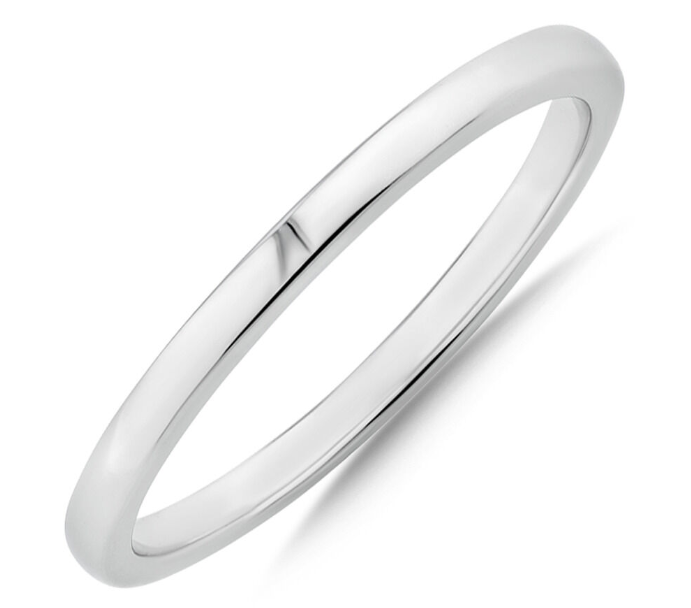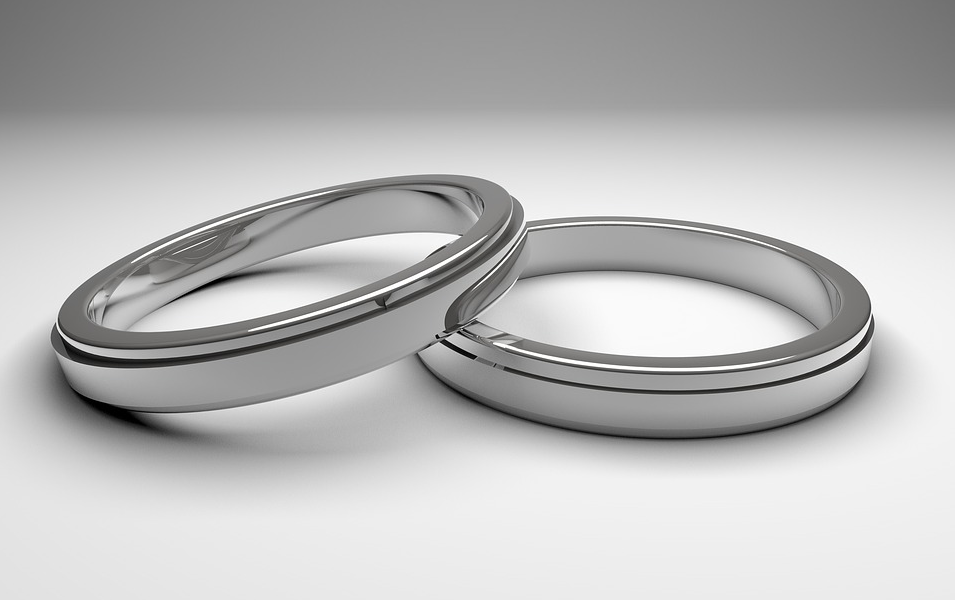When selecting jewelry, tableware, or decorative items, one of the questions that often arises is, “What is better: silver or sterling silver?”
These materials share a dazzling metallic allure but differ significantly in composition and characteristics.
Understanding the distinctions between silver and sterling silver is crucial for making informed choices, whether seeking the perfect piece of jewelry or evaluating the quality of flatware.
This exploration will delve into the properties, advantages, and applications of silver and sterling silver. We aim to shed light on the age-old debate of which is superior.
The Basics
Here are the details you need to know about silver and sterling silver:
a. Definition of Silver
Pure silver, often called fine silver, is a naturally occurring metallic element with the chemical symbol Ag (from the Latin word “argentum”).
It is known for its brilliant white luster, malleability, ductility, and excellent electrical and thermal conductivity.
One of its key characteristics is its high level of reflectivity, making it valuable in producing mirrors and jewelry.
However, pure silver is rarely used in its unalloyed form for most practical applications due to its softness and susceptibility to tarnish.
Atomic Structure and Properties
Silver possesses an atomic number of 47 and is part of the transition metal group on the periodic table.
It has a relatively small atomic radius and a stable electron configuration. The atomic structure of silver contributes to its remarkable electrical conductivity, which is even higher than copper’s.
Silver is also known for its corrosion resistance, which makes it a valuable material in various industries, including electronics and photography.
b. Definition of Sterling Silver
Sterling silver is an alloy composed primarily of silver, typically containing 92.5% pure silver (Ag) by mass, with the remaining 7.5% composed of other metals, most commonly copper (Cu).
This specific composition is a hallmark of sterling silver and is responsible for its unique properties.
Sterling silver combines the elegance and luster of pure silver with increased durability, making it suitable for various applications, especially in jewelry and tableware.
Role of Other Metals in the Alloy
The addition of copper and sometimes other metals, such as nickel or zinc, serves several crucial purposes in the sterling silver alloy:
- Durability: Copper enhances the hardness and strength of the alloy, addressing the softness of pure silver. This results in more robust and longer-lasting items.
- Tarnish Resistance: While sterling silver can still tarnish over time due to the presence of copper, the alloy’s tarnish resistance is improved compared to pure silver.
Tarnish, a darkening or discoloration of the metal’s surface, is a natural reaction with oxygen and sulfur in the air; copper in sterling silver helps mitigate this effect.
- Workability: The alloy’s malleability and ductility remain high, allowing artisans and jewelers to craft intricate designs while maintaining structural integrity.
Comparing the Two: Advantages and Disadvantages
When choosing between silver and sterling silver for various applications, weighing each option’s advantages and disadvantages is essential.
Both materials offer unique characteristics, and understanding these distinctions can help you make informed decisions regarding jewelry, tableware, and decorative items.
a. Silver: Advantages
Silver, in its various forms and alloys, has long been treasured for its unique characteristics and aesthetic appeal.
In this section, we will explore the distinct advantages of silver, shedding light on why it continues to be a sought-after material for a wide range of applications.
- Purity: Pure silver, with its 99.9% silver content, is celebrated for its remarkable purity. This high elemental purity produces a stunning, bright white luster that few materials can match.
- Value: The exceptional purity of silver contributes to its intrinsic value. Beyond its aesthetic appeal, pure silver is highly regarded as a valuable and sought-after precious metal, often used for investment purposes.
- Lustrous Appearance: Pure silver’s inherent shine and reflectivity are genuinely captivating. Its natural radiance imbues jewelry, decorative items, and artistic creations with elegance and refinement.
b. Silver: Disadvantages
While silver boasts remarkable qualities, it also comes with essential disadvantages.
- Softness Can Lead to Scratches and Deformities: One notable disadvantage of silver, particularly in its pure form, is its inherent softness.
While this softness allows for intricate craftsmanship, it also renders silver items more susceptible to scratches, dents, and deformities with regular use. This characteristic can lead to a shorter lifespan for items subjected to wear and tear.
- May Not Be as Durable for Daily Wear: For everyday wear, such as rings or bracelets, the softness of silver can be a drawback.
Continuous use can result in the loss of shape and the development of imperfections over time, potentially necessitating frequent maintenance or repair to keep the item looking its best.
c. Sterling Silver: Advantages
Sterling silver, an alloy of silver and other metals offers distinct advantages that make it a popular choice for a wide range of applications, particularly in jewelry and decorative items.
- Durability due to Added Metals: One of the primary advantages of sterling silver is its enhanced durability, thanks to adding other metals, typically copper, to the alloy.
- Resistance to Tarnishing (to a Degree): Sterling silver exhibits improved resistance to tarnishing compared to pure silver. While it can still tarnish over time, copper in the alloy helps mitigate this effect, reducing the frequency and intensity of tarnish-related discoloration and maintenance.
- Versatility in Jewelry-Making due to Its Malleability: The malleability of sterling silver, stemming from its alloy composition, provides artisans and jewelers with a versatile medium for crafting intricate and detailed designs.
d. Sterling Silver: Disadvantages
While sterling silver offers a host of advantages, it is not without its drawbacks. This section will explore the disadvantages of sterling silver, providing insights into where it may fall short of pure silver or other alternatives.
- Not Pure Silver, so Some Purists May Prefer Pure Silver: One notable disadvantage of sterling silver is that it is not entirely composed of pure silver. To enhance its durability, it contains 92.5% silver and 7.5% other metals, typically copper.
- Can Still Tarnish if Not Cared for Properly: Despite its improved resistance to tarnishing compared to pure silver, sterling silver can still tarnish if not cared for properly. Exposure to air, moisture, and certain chemicals can lead to tarnish-related discoloration.

Jewelry Considerations
When selecting the perfect jewelry piece, various factors come into play, from personal style preferences to budget considerations.
Among these factors, the choice between silver and sterling silver can significantly impact the aesthetics and overall appeal of the jewelry.
a. Aesthetics
Jewelry aesthetics encompass elements such as materials, design, and visual appeal. Differences in shine, color, and design suitability between materials like silver and sterling silver can significantly impact your jewelry’s overall look and feel.
b. Maintenance and Care
Proper maintenance and care are vital to ensure the longevity and beauty of your jewelry. Different materials may require distinct cleaning methods and precautions to prevent tarnish, scratches, or damage.
c. Price and Affordability
Budget considerations play a pivotal role in jewelry selection. Understanding the price differences between materials and designs helps you find a piece that suits your style and aligns with your financial constraints.
Common Uses in Jewelry
Jewelry, an expression of personal style and sentiment, often features various materials, each with unique attributes. Two frequently encountered materials in the world of jewelry are silver and sterling silver.
a. Silver in Jewelry
Silver, prized for its radiant purity, is often used in crafting various jewelry pieces, including rings, necklaces, earrings, and bracelets.
Its timeless appeal transcends cultures and regions, with distinct regional preferences and traditional uses.
From intricate filigree work in Indian jewelry to sleek minimalist designs in Scandinavian adornments, silver’s versatility allows it to serve as a canvas for cultural expression and artistic creativity, making it a cherished material in the global jewelry landscape.
b. Sterling Silver in Jewelry
With its blend of durability and aesthetic appeal, Sterling Silver is a popular choice for crafting an array of jewelry, including rings, pendants, bracelets, and earrings.
Its adaptability is well suited to classic and contemporary designs, making it a staple in modern jewelry trends.
Innovations in jewelry-making techniques have allowed artisans to experiment with textures, finishes, and intricate detailing.
Ethical and Environmental Considerations
As consumers become increasingly conscientious about their purchases’ ethical and environmental impact, these considerations have gained prominence in the jewelry industry.
Several vital factors warrant attention when evaluating the ethical and environmental aspects of jewelry:
Mining and sourcing implications
In some regions, extracting precious metals and gemstones can have significant environmental and social impacts, including habitat destruction, water pollution, and human rights violations.
Responsible sourcing practices involve traceability and transparency in the supply chain to ensure that materials are obtained ethically and sustainably.
Sustainability in jewelry production
Sustainable jewelry production encompasses various practices, such as using recycled metals and ethically sourced gemstones, reducing waste, and minimizing the carbon footprint of the production process.
Sustainable jewelry brands aim to reduce their environmental impact and promote eco-friendly practices.
Ethical brands and certifications to consider
When choosing ethical and environmentally responsible jewelry, look for brands that prioritize ethical sourcing, fair labor practices, and sustainable production methods.
Some certifications and initiatives, such as the Kimberley Process for conflict-free diamonds or Fair Trade Gold, can guide you toward responsible choices.
Additionally, organizations like the Responsible Jewellery Council (RJC) certify companies that adhere to ethical and sustainable standards in the jewelry industry.
Conclusion
Choosing between silver and sterling silver in jewelry hinges on various factors, including purity, durability, aesthetics, and ethical considerations.
While pure silver shines with unmatched purity, sterling silver offers enhanced durability and versatility. Ultimately, personal preferences and specific needs should guide this decision.
Whether you seek the radiant allure of pure silver or the balance of sterling silver, making informed choices aligning with your values and desires is critical in selecting the perfect piece of jewelry that reflects your unique style and ethos.



